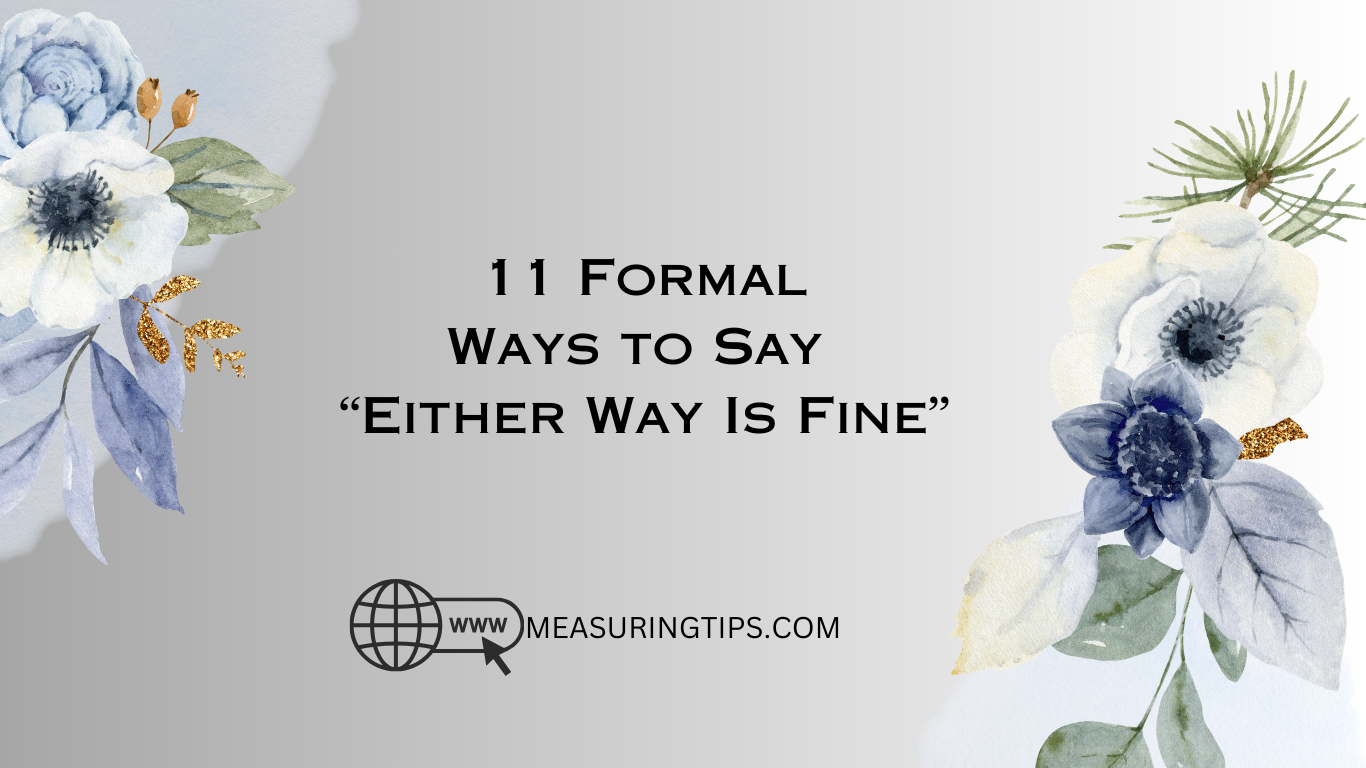
11 Formal Ways to Say “Either Way Is Fine”
When it comes to making a decision, there are often multiple options to choose from. And sometimes, it doesn’t matter which option is chosen, as long as a decision is made. In these situations, it can be helpful to have a variety of ways to express that either option is acceptable. This is especially important in professional settings, where word choice and tone can make a big difference. In this article, we will explore 11 formal ways to say “Either way is fine,” so you can confidently navigate any decision-making situation.
“Either Option Works”
This phrase is a straightforward and polite way to express that both options are acceptable. It conveys a sense of flexibility and openness to either choice.
For example, if a colleague asks if you prefer to have a meeting in person or over the phone, you could respond with, “Either option works for me.”
“I Have No Preference”
This phrase is a more neutral way to express that you do not have a preference between two options. It can be useful in situations where you want to avoid influencing the decision or appearing biased towards one option. For instance, if your boss asks if you have a preference for which project to work on, you could say, “I have no preference.”
“It’s Up to You”
This phrase puts the decision-making power in the hands of the other person. It can be used when you genuinely do not have a preference or when you want to defer to someone else’s judgment.
For example, if a friend asks if you want to go out for dinner or stay in, you could say, “It’s up to you.”
“I’m Flexible”
This phrase conveys a willingness to adapt and go with the flow. It can be used when there are multiple options, and you are open to any of them. For instance, if a client asks if you prefer to have a meeting in the morning or afternoon, you could respond with, “I’m flexible.”
“I Don’t Mind”
Similar to “I have no preference,” this phrase expresses neutrality and a lack of strong feelings towards either option. It can be used in both formal and informal settings. For example, if a family member asks if you want to watch a movie or play a board game, you could say, “I don’t mind.”
“Either One Is Fine with Me”
This phrase is a direct and clear way to express that both options are acceptable. It can be used in various situations, from casual conversations to more formal settings. For instance, if a coworker asks if you prefer to have a team lunch at a restaurant or in the office, you could say, “Either one is fine with me.”
“I’m Happy with Either Choice”
This phrase conveys a positive attitude towards both options. It can be used when you genuinely do not have a preference and are content with either outcome.
For example, if a friend asks if you want to go to the beach or the park, you could say, “I’m happy with either choice.“
“I’m Indifferent”
This phrase expresses a lack of strong feelings towards either option. It can be used when you do not have a preference or when you want to appear impartial. For instance, if a group is deciding on a restaurant for dinner and asks for your input, you could say, “I’m indifferent.”
“I Don’t Have a Strong Opinion”
Similar to “I’m indifferent,” this phrase conveys a lack of strong feelings towards either option. It can be used when you want to avoid influencing the decision or appearing biased. For example, if a team is discussing which project to prioritize, you could say, “I don’t have a strong opinion.”
“I’m Fine with Either Option”
This phrase is a simple and polite way to express that both options are acceptable. It can be used in various situations, from casual conversations to more formal settings. For instance, if a family member asks if you want to have dinner at home or go out, you could say, “I’m fine with either option.”
“I’m Open to Either Choice”
This phrase conveys a sense of openness and flexibility towards both options. It can be used when you genuinely do not have a preference or when you want to appear open-minded.
For example, if a colleague asks if you prefer to have a meeting in the morning or afternoon, you could say, “I’m open to either choice.”
10 Polite Ways to Ask for “Advice in an Email”
14 Professional Ways to Say “Thank You for Your Reply”
Conclusion-“Either Way Is Fine”
In conclusion, having a variety of ways to express that either option is fine can be helpful in navigating decision-making situations. These 11 formal phrases can help you communicate your flexibility and neutrality in a professional manner. Remember to consider the context and tone of the conversation when choosing which phrase to use. With these phrases in your arsenal, you can confidently handle any decision-making scenario.